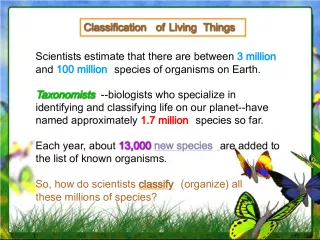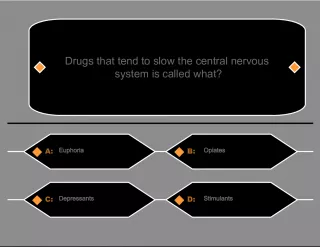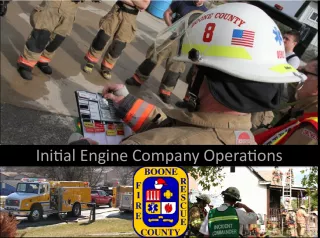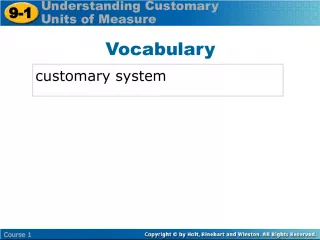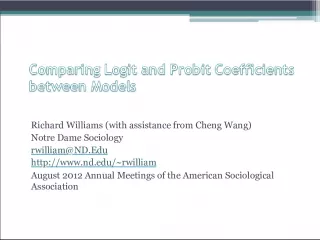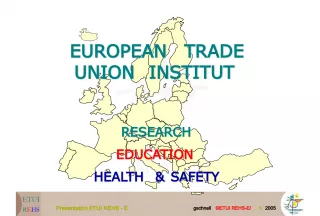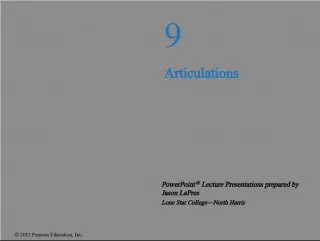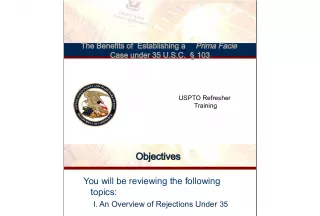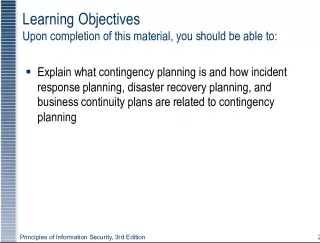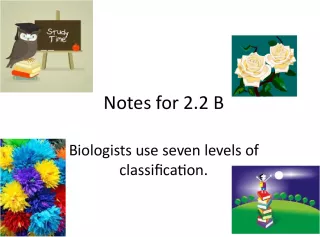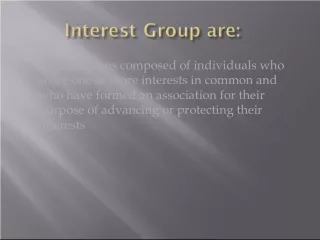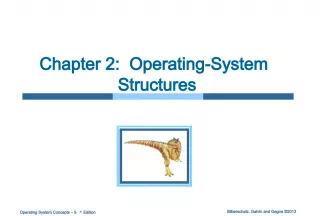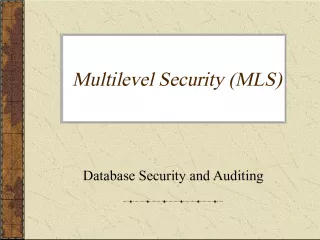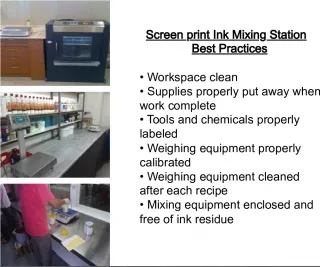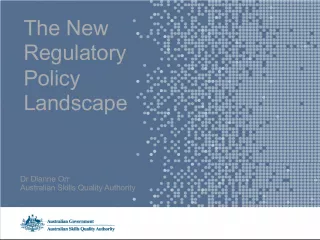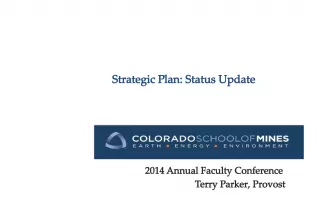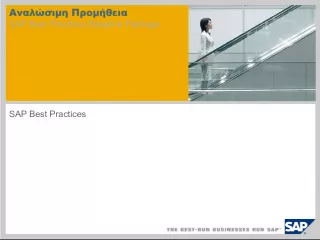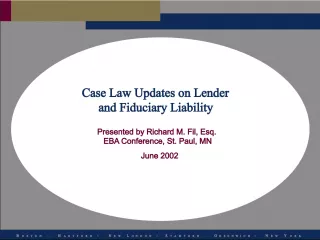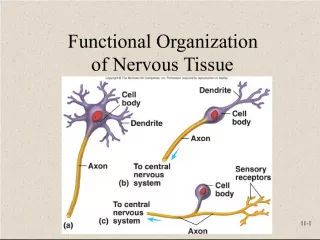Best Practices for Owner Estimating Organizations: Establishing an Estimate Classification System
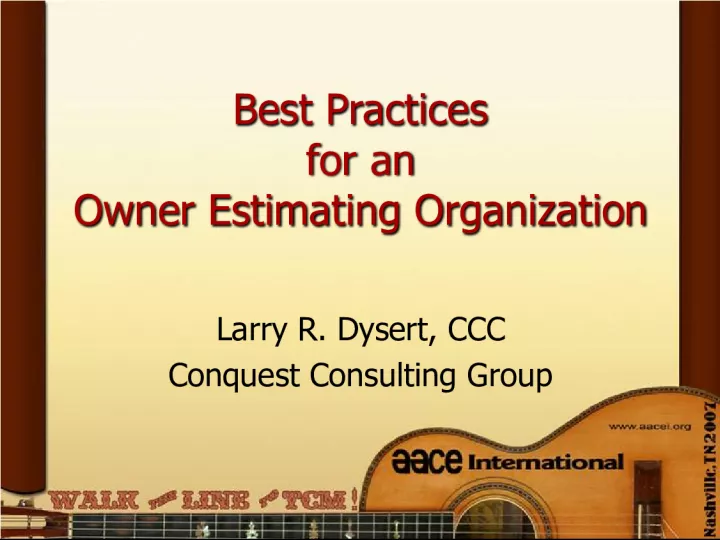

This article highlights the importance of creating an Estimate Classification System for owner estimating organizations, and provides guidance on how to develop a system that promotes consistency and understanding of project deliverables.
- Uploaded on | 9 Views
-
 carolina12
carolina12
About Best Practices for Owner Estimating Organizations: Establishing an Estimate Classification System
PowerPoint presentation about 'Best Practices for Owner Estimating Organizations: Establishing an Estimate Classification System'. This presentation describes the topic on This article highlights the importance of creating an Estimate Classification System for owner estimating organizations, and provides guidance on how to develop a system that promotes consistency and understanding of project deliverables.. The key topics included in this slideshow are Owner estimating, Best practices, Estimate classification, Consistency, Project development,. Download this presentation absolutely free.
Presentation Transcript
1. Best Practices for an Owner Estimating Organization Best Practices for an Owner Estimating Organization Larry R. Dysert, CCC Conquest Consulting Group
2. Establish an Estimate Classification System Establish an Estimate Classification System Promotes consistency and understanding of the terminology used to classify estimates both within your organization and to your external partners and contractors Develop an Estimate Classification System that correlates with your project development process and that indicates (at least at a summary level) the project and technical deliverables expected for each class of estimate
3. Establish an Estimate Classification System Establish an Estimate Classification System AACEs 17R-97 Estimate Classification System
4. Establish an Estimate Classification System Establish an Estimate Classification System
5. Establish an Estimate Classification System Establish an Estimate Classification System
6. Establish an Estimate Classification System Establish an Estimate Classification System
7. Establish an Estimate Classification System Establish an Estimate Classification System The purpose of the Estimate Classification Systems is for all parties within the owner organization to understand both the attributes for each estimate class, and the maturity level of the supporting technical deliverables used to develop each class of estimate The Estimate Classification System also facilitates communication with contractors, or others outside of the owners organization, regarding expectations for each class of estimate
8. Standard Estimating Guidelines and Procedures Standard Estimating Guidelines and Procedures Department estimating guidelines and procedures should be documented and maintained under controlled distribution; including end-user documentation for software systems, cost database information, and other estimating resource information This information should also be available on the organizations intranet site to be accessible throughout the owner organization
9. Standard Estimating Guidelines and Procedures Standard Estimating Guidelines and Procedures Although not necessarily complete, the following list identifies some of the areas to be covered in an estimating procedures manual: Overview of the Estimating Process Estimate Classification and Technical Requirements Planning the Estimate Structuring the Estimate Developing the Estimate (Internally or using 3 rd Parties) Conditioning 3 rd Party Prepared Estimates Analyzing Cost Risk and Estimating Contingency Documenting the Basis of Estimate Estimate Reporting Review and Issue Estimate (Including Benchmarking Analysis) Estimate Maintenance (Change Management) Estimate Close-Out (Project Close-Out Support) Estimate Databases and Systems Maintenance
10. Standard Estimating Guidelines and Procedures Standard Estimating Guidelines and Procedures 3 rd Party Prepared Estimates the owner should be prescriptive in identifying estimate requirements and expectations to the 3rd party, including the specification of: Estimate Preparation Plan and Schedule Requirements Identifying Estimate Work Breakdown and Cost Breakdown Structures Estimate Documentation Requirements (including Basis of Estimate) Estimate Benchmarking Requirements Estimate Calculation for Escalation, Contingency, Currency (as required)
11. Standard Estimating Guidelines and Procedures Standard Estimating Guidelines and Procedures 3 rd Party Prepared Estimates If the owner utilizes engineering or construction contractors to prepare estimates, then the owner should pay particular attention to identifying and documenting the steps in conditioning a 3rd party estimate (the process of adjusting a 3rd party estimate for specific owner and site conditions, as well as ensuring that all owners costs are included)
12. Standard Basis of Estimate Standard Basis of Estimate It is a document that is prepared by the estimator or estimating team that provides the basis for the costs identified within cost estimate Facilitates estimate analysis (reconciliation, validation, benchmarking) and review Documents significant communications and agreements made regarding the estimated costs (can support litigation) Succinctly documents critical aspects of the project to help mitigate cost risk (including risk from misunderstandings)
13. Standard Basis of Estimate Standard Basis of Estimate Content 1 Purpose 2 Scope 3 Design Basis 4 Planning Basis 5 Cost Basis 6 Allowances 7 Assumptions 8 Exclusions 9 Exceptions 10 Risks/Opportunities 11 Contingency 12 Management Reserve 13 Reconciliation 14 Benchmarking 15 Estimate Quality Assurance Plan 16 Attachments
14. Suite of Estimating Tools and Techniques Suite of Estimating Tools and Techniques Owners typically prepare estimates for a wide range of Estimate Classes, and the estimating tools and techniques must match the information available (and completeness of that information) for each estimate class
15. Suite of Estimating Tools and Techniques Suite of Estimating Tools and Techniques Class 5 Estimates: Information Requirements Preliminary requirements & scope description Approximate plant/system capacity General project location Block flow diagrams for production units Block layout drawings defining functional areas with relative locations Approximate major equipment capacity & metallurgy (if known)
16. Suite of Estimating Tools and Techniques Suite of Estimating Tools and Techniques Class 5 Estimates: Tools and Techniques Capacity factored estimates Investment Curves Specialized parametric estimating software Analogy (past project history adjusted for scope, location, time, etc.) Estimating judgment
17. Suite of Estimating Tools and Techniques Suite of Estimating Tools and Techniques Class 4 Estimates: Information Requirements Complete process flow diagrams (PFDs) Preliminary utility load sheets Preliminary process equipment list w/ in-house pricing General equipment layout drawings General plant/site layout drawings Preliminary piping/pipeline specifications Preliminary electrical one-line drawings & equipment/motor list Preliminary process control description Preliminary instrument/major control device list Approximate process control I/O count Preliminary PEP
18. Suite of Estimating Tools and Techniques Suite of Estimating Tools and Techniques Class 4 Estimates: Tools and Techniques Equipment factored estimates Specialized parametric estimating software Forced detail line item estimates Factored costs for non-direct construction items Budget quotes for major equipment items
19. Suite of Estimating Tools and Techniques Suite of Estimating Tools and Techniques Class 3 Estimates: Information Requirements Complete process & utility P&IDs Final utility load sheets Complete process equipment/spare parts lists w/vendor quotes Final piping/duct specifications Preliminary valve & piping specialty item list w/vendor quotes Final electrical one-line drawings Complete electrical equipment/motor list w/vendor quotes Final process control description Updated instrument/major control device list w/ vendor quotes Final process control I/O count and loop counts Final instrument data sheets Preliminary control panel layouts Definitive PEP
20. Suite of Estimating Tools and Techniques Suite of Estimating Tools and Techniques Class 3 Estimates: Tools and Techniques Detailed or semi-detailed line item estimates Detail for project administration, engineering and other non-direct costs Firm quotes for major equipment items Minimal use of factors
21. Standardized Risk Analysis and Contingency Determination Methodology Standardized Risk Analysis and Contingency Determination Methodology Risk analysis is a process which can be used to provide management with an understanding of the probability of overrunning (underrunning) a specified estimate value It provides a realistic view of the probabilities of completing the estimate for a specified value Its purpose is to improve the accuracy of project evaluations and funding (not to improve the accuracy of the estimate)
22. Standardized Risk Analysis and Contingency Determination Methodology Standardized Risk Analysis and Contingency Determination Methodology Risk analysis generally uses a modeling concept to determine a composite probability distribution around the range of possible project cost totals The resulting probability distribution of possible final cost outcomes can be used to determine an amount to be used as contingency Management selects a proposed final funding value based on the level of risk they are willing to accept The difference between the selected funding value and the point estimate is the amount of contingency
23. Standardized Risk Analysis and Contingency Determination Methodology Standardized Risk Analysis and Contingency Determination Methodology Contingency Definition The funds which are added to the point estimate to achieve a given probability of not overrunning the estimate (given relative stability of the project scope and the assumptions upon which the estimate is based) Reserves Definition Funds allocated to a project to cover additional cost risk outside of the scope and assumptions upon which the estimate is based Management Reserve (typically for potential scope change) Event-Driven Risk Reserve (typically for extraordinary events outside of the assumptions of the estimate)
24. Standardized Risk Analysis and Contingency Determination Methodology Standardized Risk Analysis and Contingency Determination Methodology Standardized methodology is required for cost risk analysis and contingency/reserve determination Facilitate communication about risk, uncertainty, contingency, reserves throughout organization (and to affected 3 rd parties) Drive consistency in approach to risk, contingency, and reserves across all projects Promote improved project control Promote portfolio management of risks
25. Estimate Review and Validation Process Estimate Review and Validation Process Principle purpose of the estimate review process is to present information about the estimate and the project that allows the reviewer to evaluate that the estimate is of sufficient quality to meet its intended purpose Formal estimate review process should be a standard practice for all estimating departments to ensure: Quality Accuracy Completeness Consistency Understanding
26. Estimate Review and Validation Process Estimate Review and Validation Process Typical Estimate Reviews Estimating Group at various times during the estimate preparation, as required Engineering / Design formally at the end of estimate preparation, but may be at various times during preparation Project Manager / Project Team after the estimate has passed all the previous peer and engineering reviews Management when and at what mgmt level will vary with the strategic importance and/or total project value
27. Estimate Review and Validation Process Estimate Review and Validation Process Estimate Validation Estimate should include a metrics report Summarizes and compares key benchmark ratios versus historical values from similar projects Provides sanity check for the estimate High level metrics Discipline level metrics Check estimate using Order-of-Magnitude methods
28. Estimate Review and Validation Process Estimate Review and Validation Process Estimate Validation Capability to provide quick check estimates depends on having the correct strategic and conceptual estimating tools and information Benchmarking ratios and metrics require having a project history database to collect, analyze and present the required information
29. Historical Project Data Collection Process Historical Project Data Collection Process Goal Collect actual project cost and schedule data Translate that data into useful information that serves as a knowledge base for your estimating and project controls organization
30. Historical Project Data Collection Process Historical Project Data Collection Process The Historical Project Data Collection process can yield several useful information tools Tools for Strategic and Conceptual Cost Estimating and Scheduling Measures of Estimating Database Quality Measures of Project, Function, and Organization Quality and Performance Tools for Organizational Forecasting Tools for Project Planning Tools for Risk Assessment Measures for Estimate Validation Tools to establish Project Cost and Schedule Goals
31. Historical Project Data Collection Process Historical Project Data Collection Process Tools for Conceptual Cost Estimating
32. Historical Project Data Collection Process Historical Project Data Collection Process Measures of Estimate Database Quality
33. Historical Project Data Collection Process Historical Project Data Collection Process Measures of Project, Function, and Organization Quality and Performance Actual Project Cost to Revised Budget Percentage of Estimates using Required Technical Deliverables Percentage of Projects using Best Practices Comparison to Industry for Cost, Schedule, Safety, Operability Measures
34. Historical Project Data Collection Process Historical Project Data Collection Process Tools for Risk Assessment Analysis of Contingency Required by Project or Technology Type Comparisons of Contingency Funded versus Contingency Expended Data-Driven or Data-Calibrated Models for Establishing Cost Contingency
35. Historical Project Data Collection Process Historical Project Data Collection Process Measures for Estimate Validation Key Metrics, Ratios, Benchmarks Comparing a Given Estimate to Similar Past Projects Percent Project Administration Percent Engineering/Design Equipment Cost to Total Project Cost Construction Labor Cost to Total Field Cost Total Field Cost to Total Project Cost Project Cost to Specified Unit of Capacity
36. Historical Project Data Collection Process Historical Project Data Collection Process Tools to Establish Cost and Schedule Goals Key Metrics, Ratios, Benchmarks Comparing a Collection of Project History to Industry Data Percent Project Administration Percent Engineering/Design Equipment Cost to Total Project Cost Construction Labor Cost to Total Field Cost Total Field Cost to Total Project Cost Project Cost to Specified Unit of Capacity
37. Take Ownership of all estimates prepared (internal or external) Take Ownership of all estimates prepared (internal or external) The buck stops with you! the owner!
38. Take Ownership of all estimates prepared (internal or external) Take Ownership of all estimates prepared (internal or external) Need to understand the technical and project deliverables required for various estimates Need a standardized, disciplined estimating process Need a standardized Basis of Estimate Need variety of tools and techniques Need to standardize risk evaluation, contingency, and reserves Need standardized review and validation process Need historical data to support all of the above
39. Estimating Best Practices Estimating Best Practices Estimates are readily understood, can be readily compared, and inspire confidence Estimates are all structured the same (including estimates prepared by 3 rd parties) Past estimates and project histories are easy to use reliable reference sources Estimating knowledge is transferable Estimates are highly predictable Estimates are sufficiently accurate to support project decision- making
40. Best Practices for an Owner Estimating Organization Best Practices for an Owner Estimating Organization Larry R. Dysert, CCC ldysert@ccg-estimating.com

